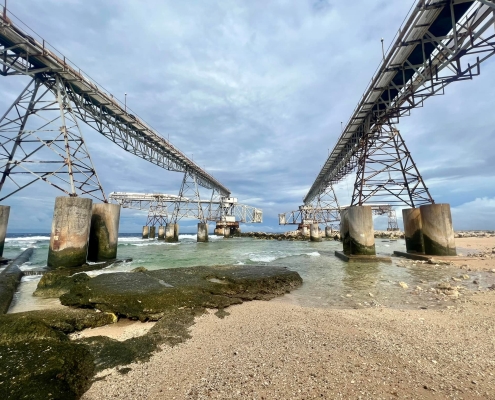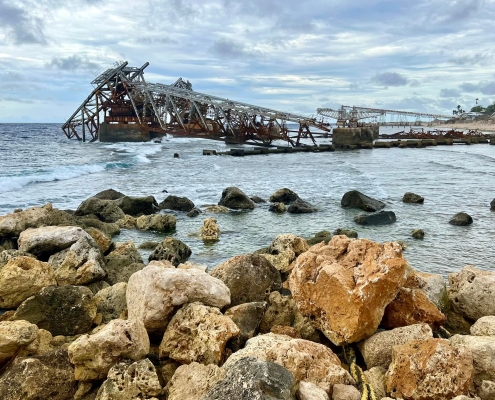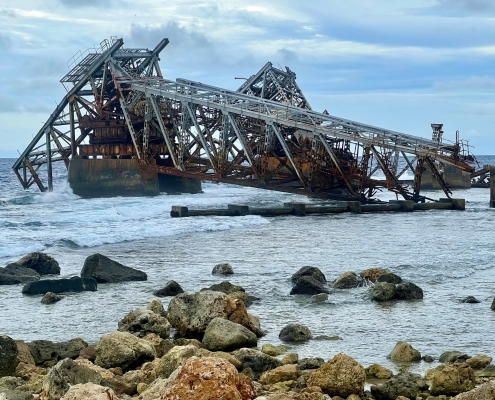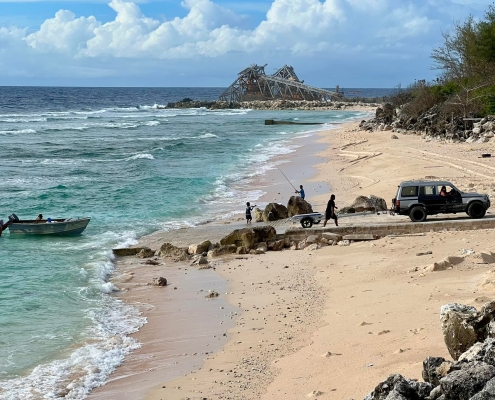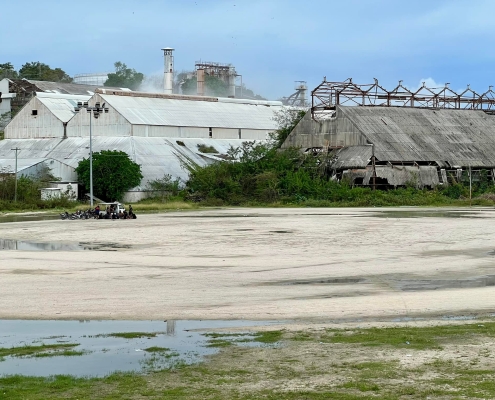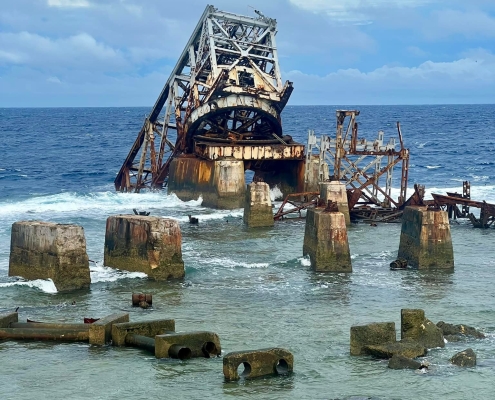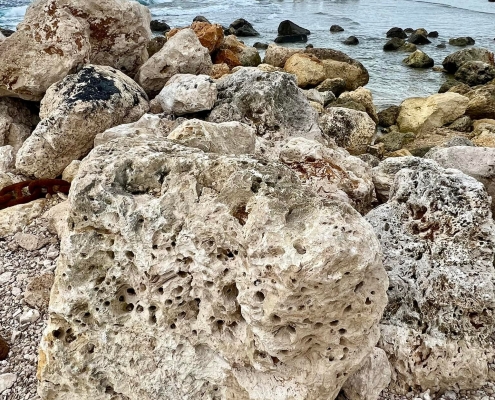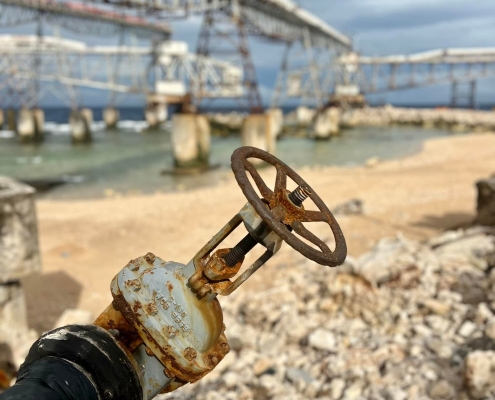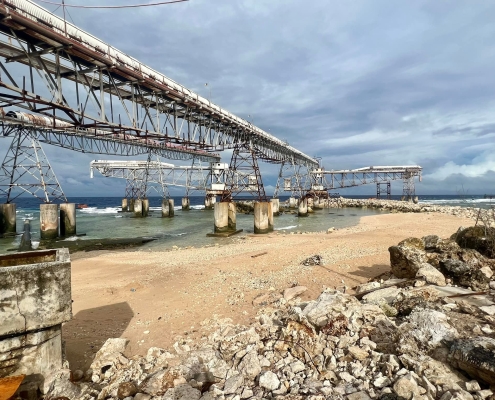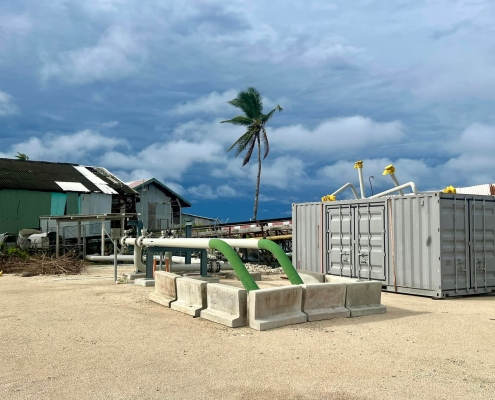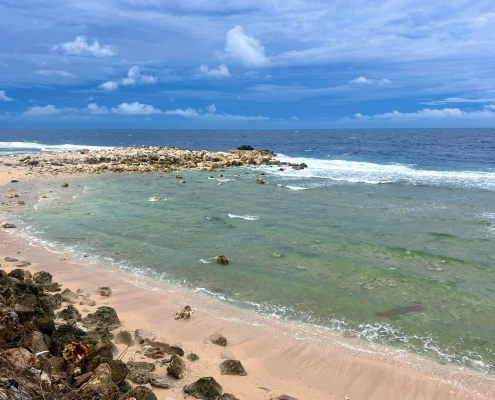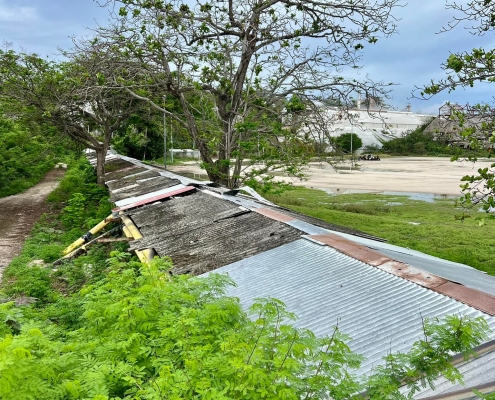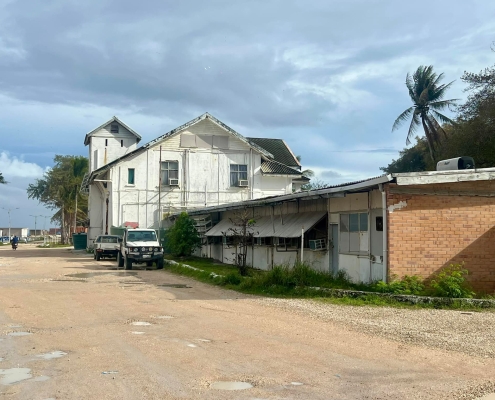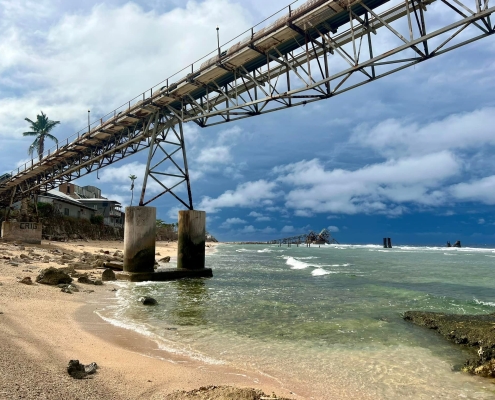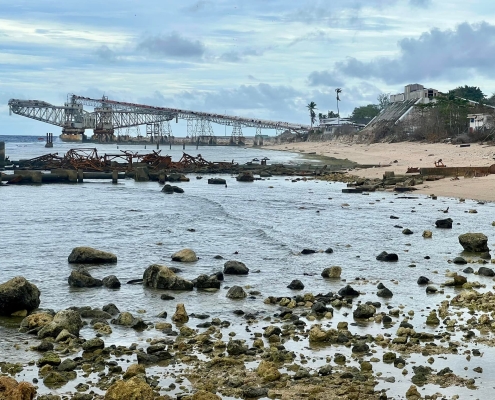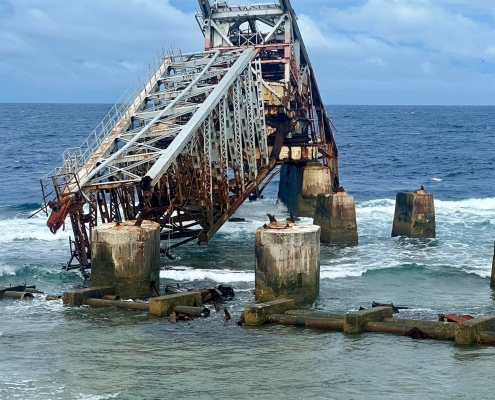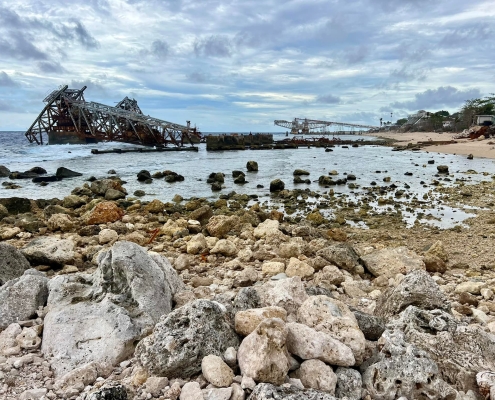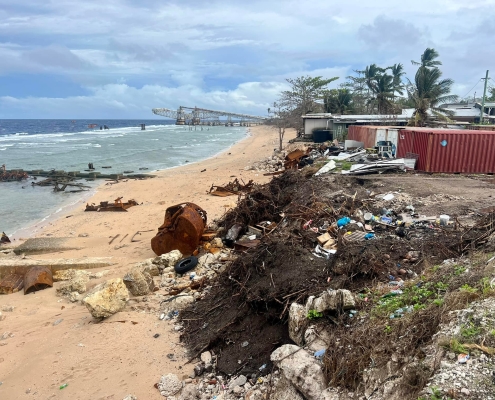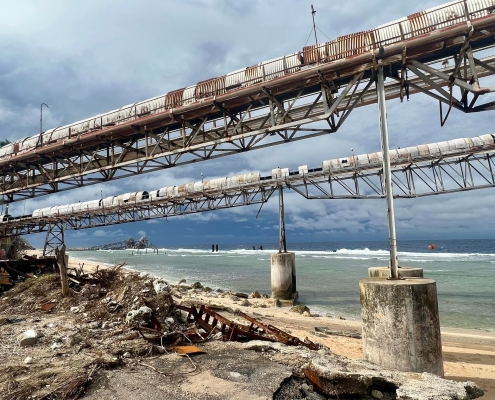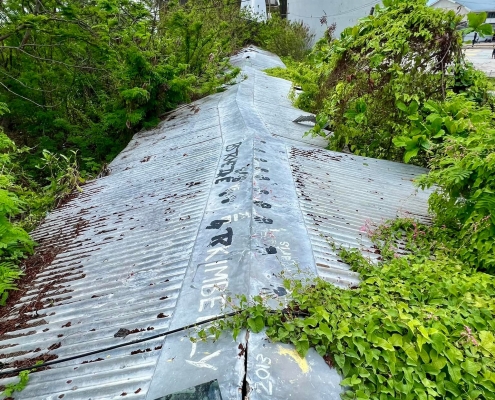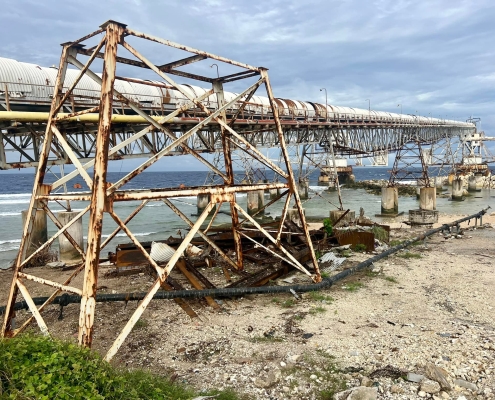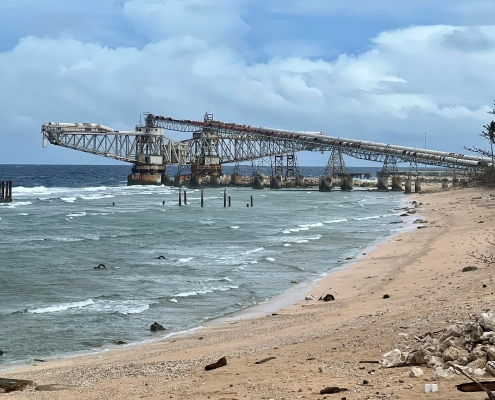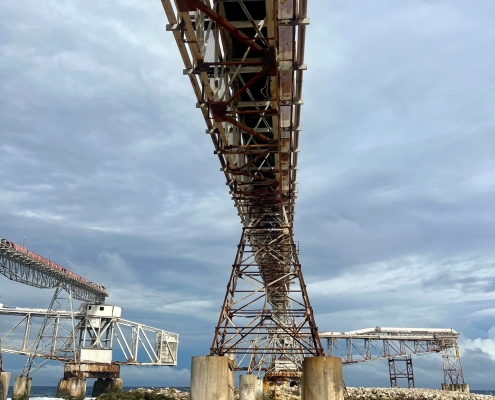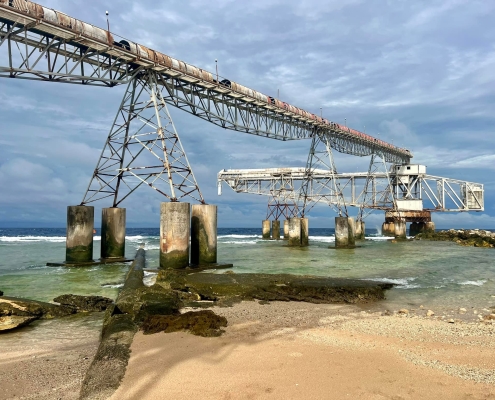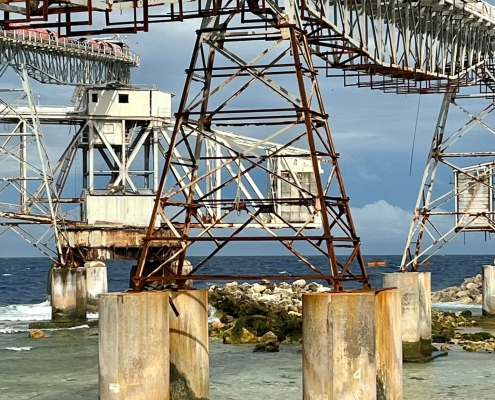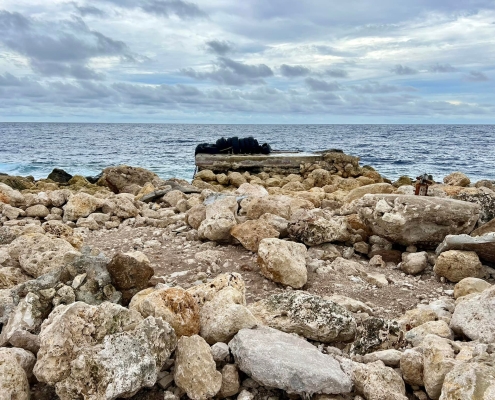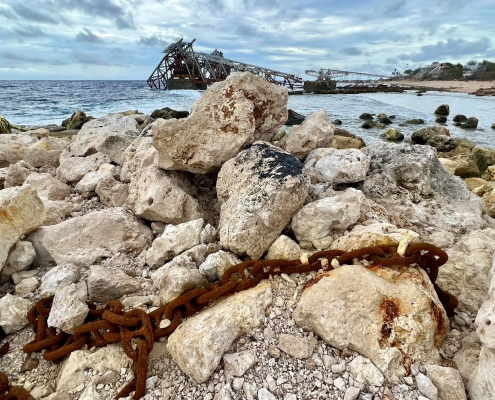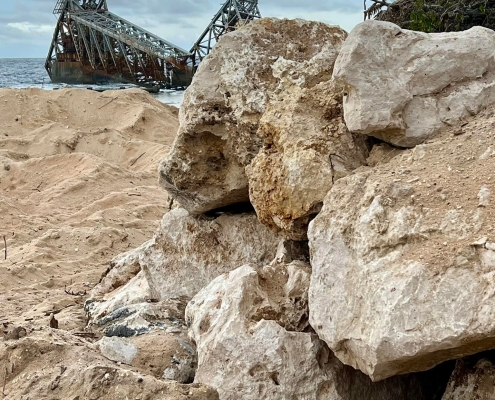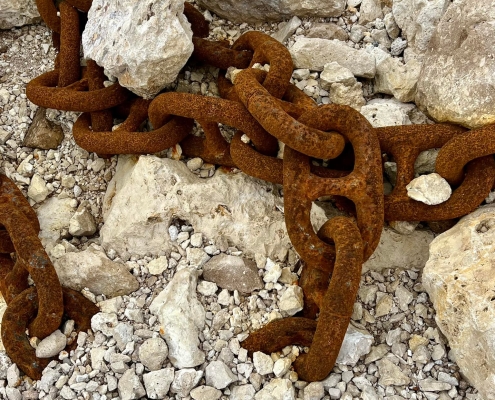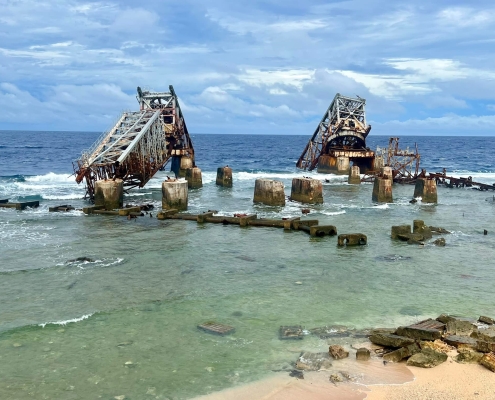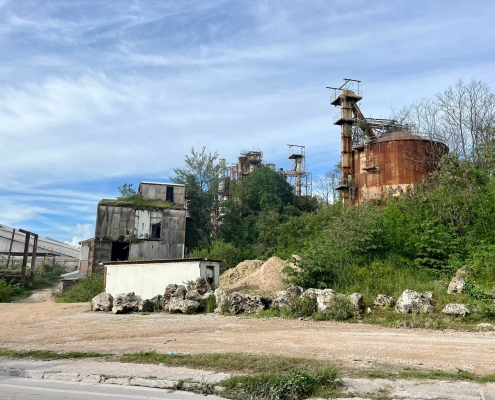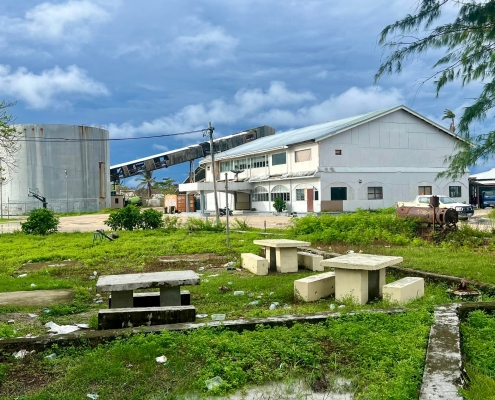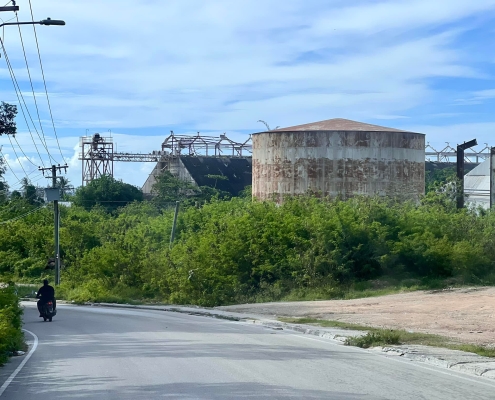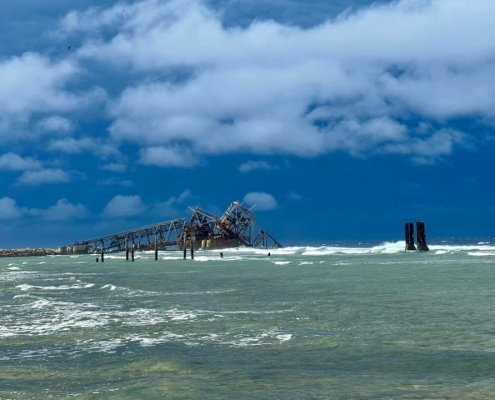Nauru: Phosphate Mining Industrial Ruins
The history of the small Nauru is tied to phosphate. The island wasn’t even discovered by Europeans until 1798, and the Germans incorporated the tiny island into their New Guinea colony in late 1800s. In 1899, a little known geologist Albert Ellis arrived in the Sydney office of the Pacific Trading Company and was asked to take a closer look on some “rock” that was propping the office door open – hopefully it was some sort of fossil. To his surprise, Ellis found this to be a piece of high-grade phosphate ore, incredible high quality and pure. Ellis was told the rock was from Nauru and he quickly sailed there to discover the island consisted 80% of pure phospate! After WWI, Australia took control of Nauru and declared it an offshore mining site, exporting some 200,000 metric tons of phosphate a year, which quadrupled over the next 20 years. Phosphate mining paused during the Japanese occupation in WWII, but then resumed. By the time Nauru declared its independence and nationalized the phosphate industry in 1968, more than 35 million metric tons of phosphate had left its shores – enough to fill dump trucks parked end to end from NYC to LA and back again. With phosphate industry nationalized, Naurans become the second wealthiest people on Earth after Saudi on a per capita basis. Nauru launched its own airline, bought hundreds of Lamborghini, and even used currency (Australian) as toilet paper, and the national Phosphate Trust grew over $1 billion. Then this all came abruptly to an end – by 2005 almost all phosphate was mined out and ran out, the trust fund was mismanaged down to only $30 million, and the house of cards completely collapsed. And this is where Nauru is today – a country in the name only, otherwise completely dilapidated, full of industrial skeletons of the old phosphate era, and absolutely zero future. The history of the small Nauru is tied to phosphate. The island wasn’t even discovered by Europeans until 1798, and the Germans incorporated the tiny island into their New Guinea colony in late 1800s. In 1899, a little known geologist Albert Ellis arrived in the Sydney office of the Pacific Trading Company and was asked to take a closer look on some “rock” that was propping the office door open – hopefully it was some sort of fossil. To his surprise, Ellis found this to be a piece of high-grade phosphate ore, incredible high quality and pure. Ellis was told the rock was from Nauru and he quickly sailed there to discover the island consisted 80% of pure phosphate! After WWI, Australia took control of Nauru and declared it an offshore mining site, exporting some 200,000 metric tons of phosphate a year, which quadrupled over the next 20 years. Phosphate mining paused during the Japanese occupation in WWII, but then resumed. By the time Nauru declared its independence and nationalized the phosphate industry in 1968, more than 35 million metric tons of phosphate had left its shores – enough to fill dump trucks parked end to end from NYC to LA and back again. With phosphate industry nationalized, Naurans become the second wealthiest people on Earth after Saudi on a per capita basis. Nauru launched its own airline, bought hundreds of Lamborghini, and even used currency (Australian) as toilet paper, and the national Phosphate Trust grew over $1 billion. Then this all came abruptly to an end – by 2005 almost all phosphate was mined out and ran out, the trust fund was mismanaged down to only $30 million, and the house of cards completely collapsed. And this is where Nauru is today – a country in the name only, otherwise completely dilapidated, full of industrial skeletons of the old phosphate era, and absolutely zero future.

